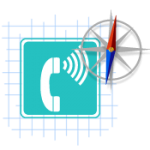Food and Beverage Service
Recommendations for Buffet Meals
Buffet meals can work for all audiences, though additional time may be required (versus seated/served meals). Use the following guidelines when setting up buffet lines and stations:
-
Buffet service tables should be no higher than 36 inches.
-
Set plates, cups, and other service items, as well as food and beverage items, at table height, within reach of people using mobility devices and those of short stature. Avoid food set-ups with multiple tiers.
-
Set buffet tables in straight lines (avoiding patterns will reduce wait times).
-
Keep chafing dishes for hot food (also known as “chafers”) as low as possible. Avoid gel fuel heaters, since they are a frequent source of reaction for those with chemical sensitivities.
-
Avoid soup as a buffet menu option (it can be difficult for some people to serve or carry); serve soup at tables.
-
Provide additional servers to assist attendees. Buffet style service is difficult for many people with various types of disabilities. Servers may offer assistance describing items, reaching for food, and carrying plates and drinks to tables.
-
Attendees may have personal assistants with them to help get food and/or eat. Assistants who are eating may need to go through the buffet line twice.
-
Consider setting extra buffet lines if many attendees have disabilities, as they may need a little more time to go through the line.
-
The National Federation of the Blind recommends buffet service as long as there are enough staff. Servers should be stationed at each item along the buffet to describe the food and place items on the plate. The plate is handed down the line of servers as the participant moves down the line.
Recommendations for Planners
-
Ask about dietary needs and/or food allergies and intolerances of participants and personal assistants on the registration form. Don’t forget speakers, presenters, volunteers, or other staff if they will be eating as well.
-
Give careful thought to your menu. When possible include people with disabilities in menu planning.
-
Avoid items that are difficult to cut or handle (such as lobster in shells).
-
Avoid high-risk allergens, such as peanuts and shellfish. Other common foods or ingredients that can cause allergic reactions or other problems for some people include eggs, cow’s milk, wheat and gluten, fish, tree nuts, and soy.
Additional Tips and Recommendations for Meals
-
Provide drinking straws for beverages (the flexible kind work best).
-
Include cups with and without handles. Disposable cups with lids for both cool and hot beverages are also recommended.
-
Additional servers may be needed, depending on the number of attendees who have disabilities.
-
Service Dogs: Attendees may have service dogs with them. The ADA mandates that service dogs are allowed to be in places of public accommodation such as hotels, convention centers, restaurants, and other venues that serve food. A service dog is specifically trained to assist a person with a disability, which can be physical or not.
-
Do not use candles or fresh flowers at the meeting, including at buffet meals and in dining areas.


User Comments/Questions
Add Comment/Question